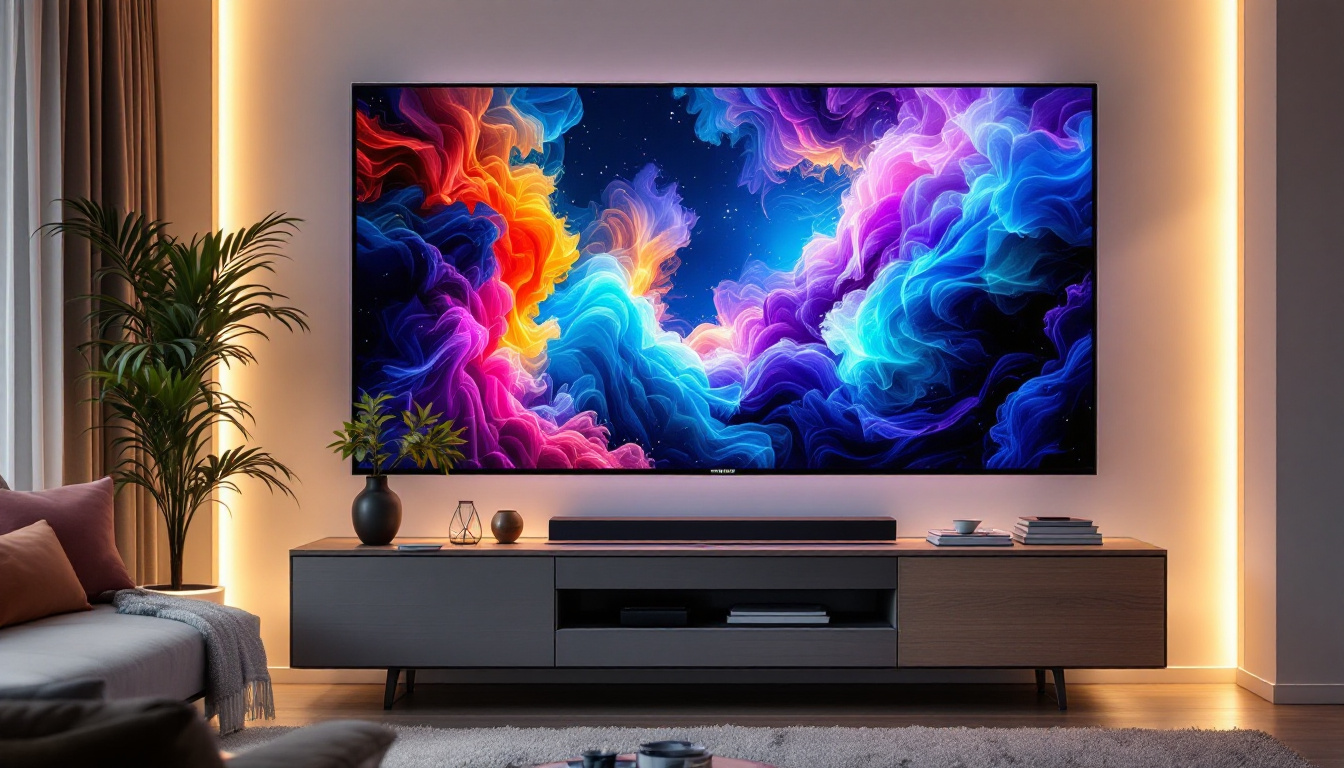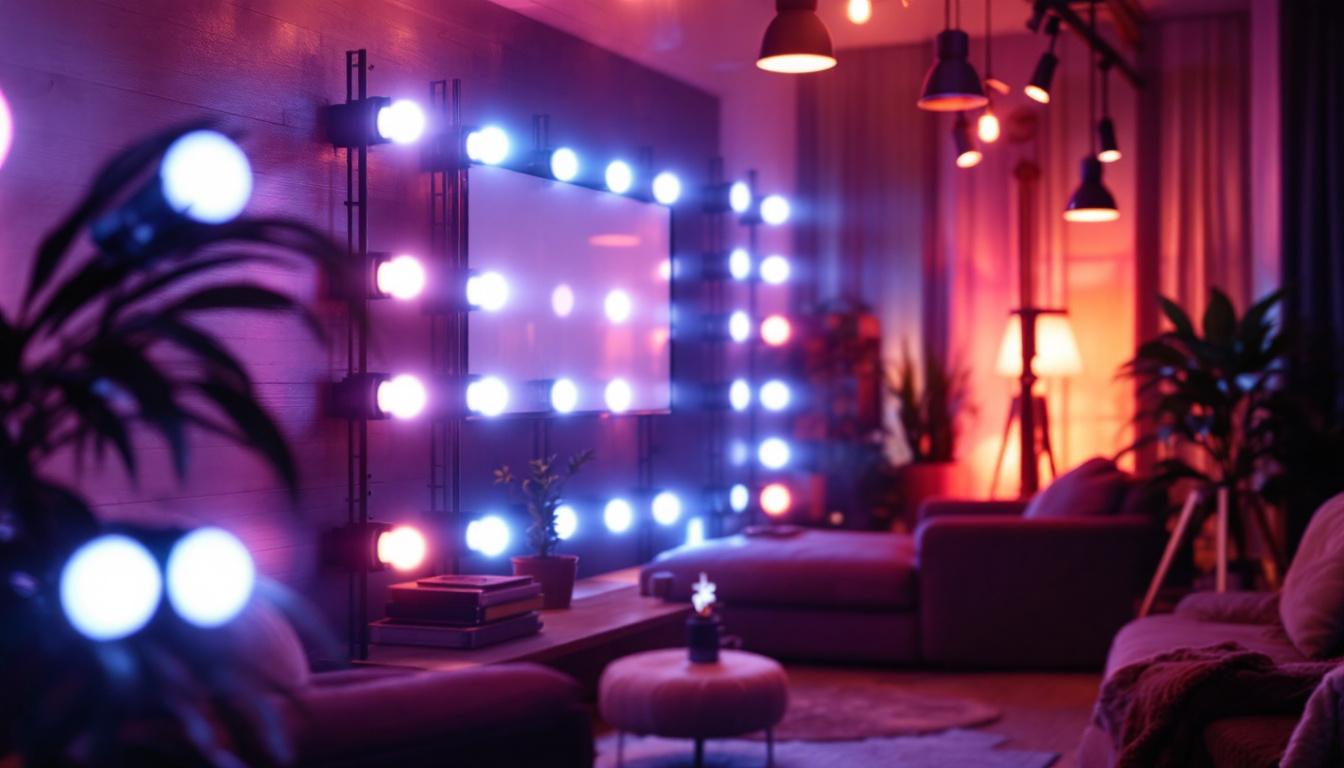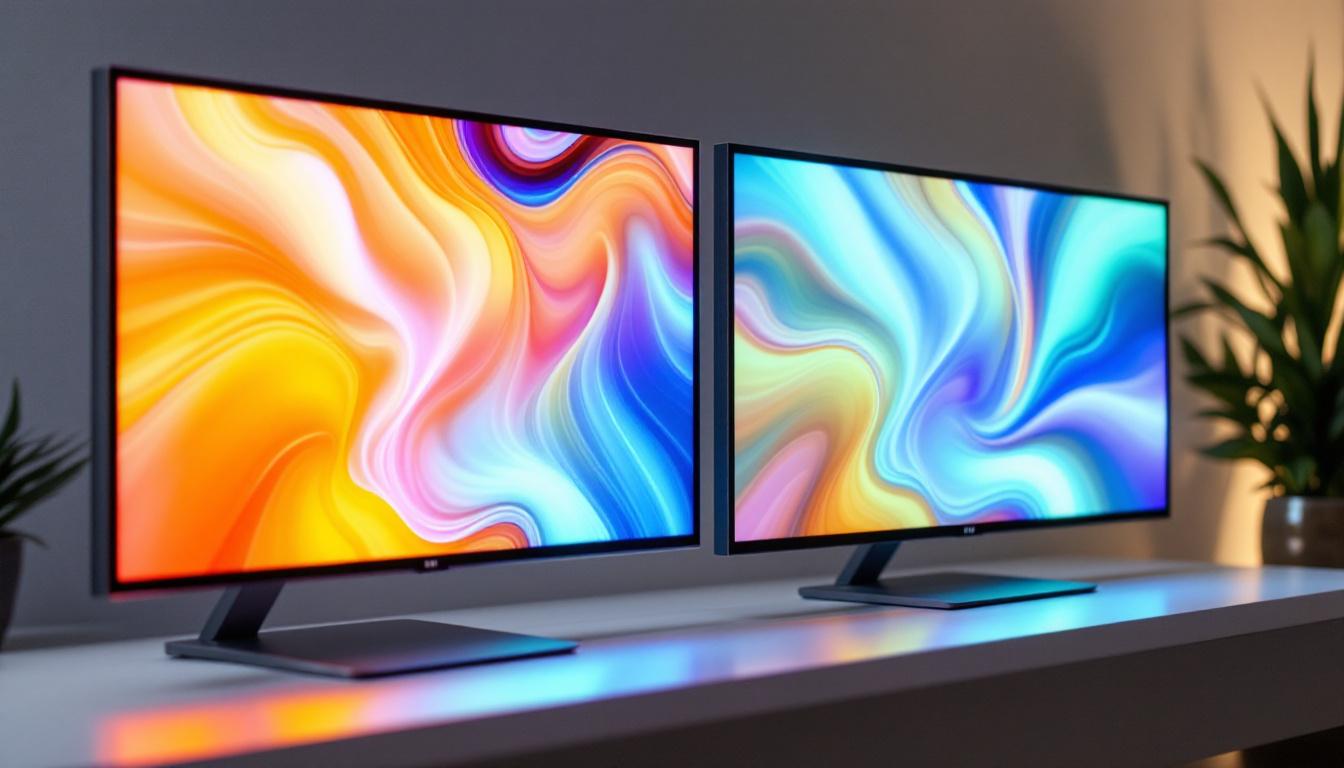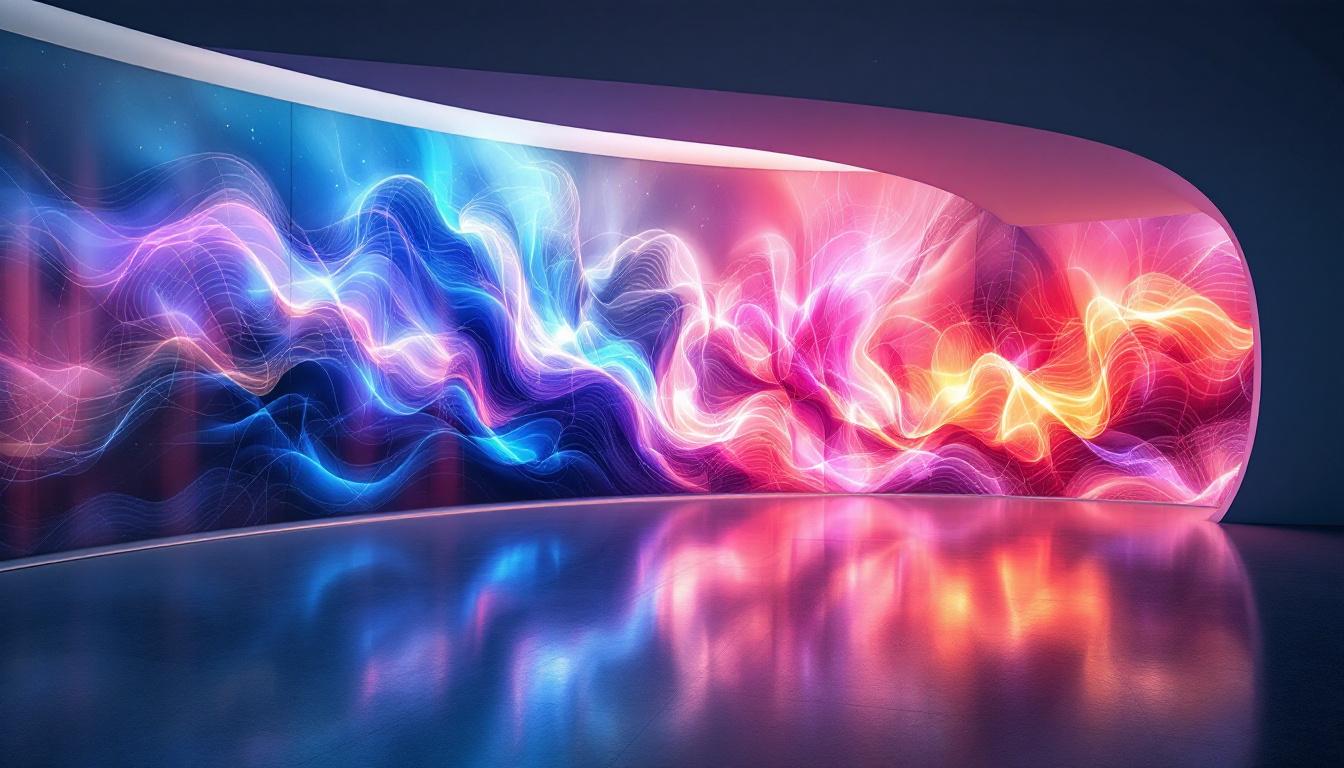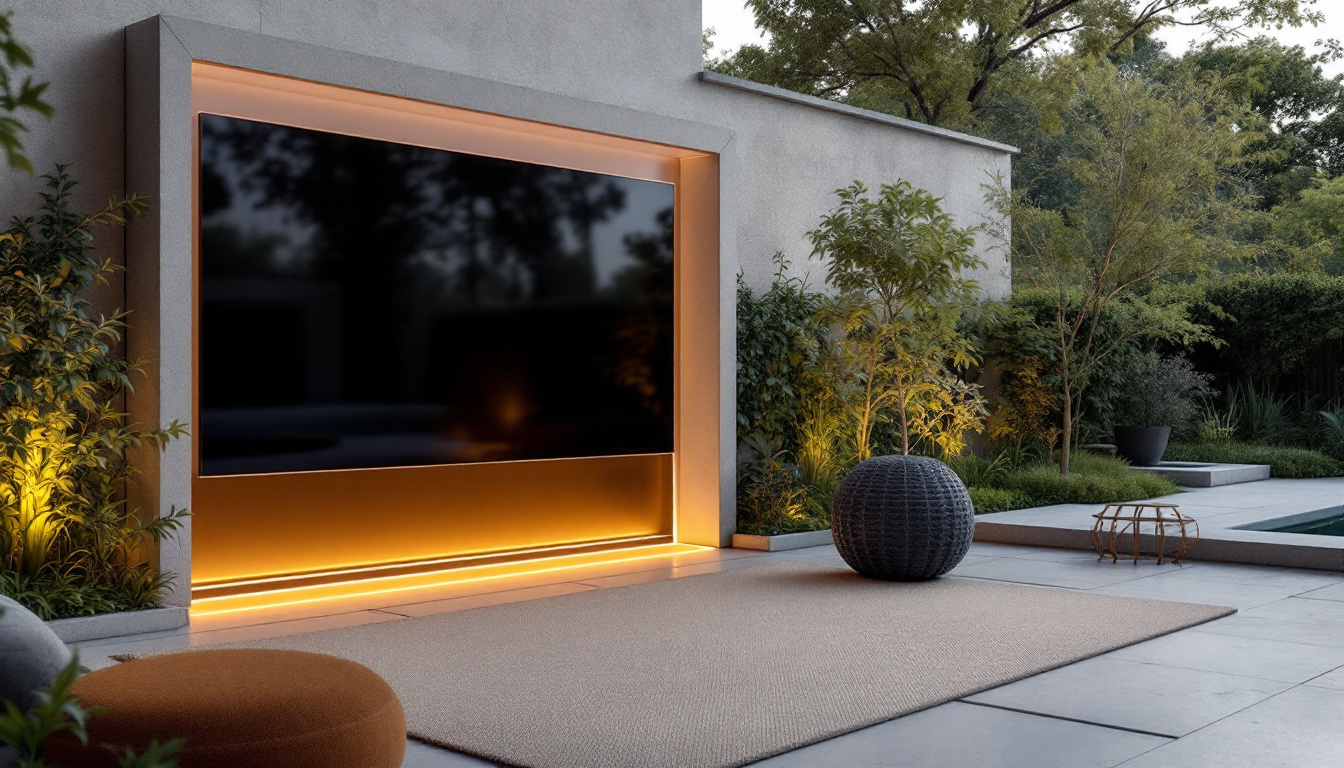In recent years, the evolution of television technology has transformed the way audiences experience visual content. Among the most significant advancements is the introduction of LED displays, which have become a popular choice for wall-mounted televisions. This article delves into the intricacies of LED technology, its benefits, and how it compares to other display types.
Understanding LED Technology
LED, or Light Emitting Diode, technology has revolutionized the display industry. Unlike traditional LCD screens that rely on fluorescent backlighting, LED displays utilize an array of tiny diodes to produce light. This fundamental difference in technology results in various advantages, including improved brightness, energy efficiency, and a wider color spectrum. The shift to LED technology has not only enhanced the visual experience for consumers but has also contributed to more sustainable practices in the electronics industry, as LED displays consume significantly less power than their predecessors.
The Basics of LED Displays
At its core, an LED display consists of thousands of small diodes that emit light when an electric current passes through them. These diodes can be arranged in various configurations, such as edge-lit or full-array, each offering unique benefits. Edge-lit displays have LEDs placed along the edges of the screen, while full-array displays feature a grid of LEDs behind the screen, allowing for more precise control over brightness and contrast. This precision is particularly important in high dynamic range (HDR) content, where the range between the darkest and lightest parts of the image is more pronounced, providing a more immersive viewing experience.
One of the most notable features of LED technology is its ability to produce deeper blacks and brighter whites. This is achieved through a process called local dimming, where specific areas of the screen can be dimmed or brightened independently. This capability enhances the overall picture quality, making it ideal for watching movies or playing video games. Furthermore, the rapid response time of LED displays reduces motion blur, which is crucial for fast-paced content, ensuring that every frame is sharp and detailed.
Types of LED Displays
There are several types of LED displays available in the market, each designed to cater to different viewing preferences and environments. The most common types include:
- Standard LED: These displays use traditional LED technology and are suitable for most general viewing needs.
- QLED: Quantum Dot LED technology enhances color accuracy and brightness, making it a favorite among cinephiles.
- OLED: While not technically an LED technology, OLED (Organic Light Emitting Diode) offers superior contrast and color depth, often competing with high-end LED displays.
Each type of display has its own set of advantages and disadvantages, making it essential for consumers to consider their specific needs before making a purchase. For instance, while QLED displays are known for their vibrant colors and high brightness levels, they may not achieve the same level of black depth as OLEDs, which can turn off individual pixels to create true blacks. Additionally, the viewing angles of these displays can vary significantly; OLEDs typically provide better performance from off-angles, which is beneficial in larger rooms where viewers may not be directly in front of the screen. As technology continues to evolve, new innovations such as mini-LED and micro-LED are emerging, promising even greater advancements in display quality and efficiency.
Benefits of Wall-Mounted LED TVs
Wall-mounted LED TVs have gained immense popularity in modern homes and commercial spaces. The aesthetic appeal and space-saving design are just the tip of the iceberg when it comes to their advantages.
Space Efficiency
One of the primary benefits of wall-mounted LED TVs is their ability to save space. Unlike traditional TVs that require bulky stands or furniture, wall-mounted models can be installed flush against the wall, freeing up valuable floor space. This is particularly advantageous in smaller rooms where every square foot counts.
Moreover, wall mounting allows for more flexible room layouts. Homeowners can position their TVs at optimal viewing heights, ensuring a comfortable experience whether they are lounging on the couch or enjoying a meal in the dining area. This flexibility also extends to the design possibilities; for instance, a wall-mounted TV can be seamlessly integrated into a feature wall with shelves or artwork, creating a cohesive look that enhances the overall decor of the space.
Enhanced Viewing Experience
Wall-mounted LED TVs often provide a more immersive viewing experience compared to their freestanding counterparts. By eliminating distractions and creating a clean, streamlined look, viewers can focus solely on the content. Additionally, many modern LED TVs come equipped with advanced features such as 4K resolution, HDR (High Dynamic Range), and wide viewing angles, further enhancing the overall experience.
Furthermore, wall-mounted TVs can be paired with soundbars or home theater systems, creating a cinematic atmosphere that elevates movie nights and gaming sessions to new heights. The strategic placement of the TV can also optimize sound quality, as wall mounting allows for better acoustics by reducing sound reflections from furniture. This is especially beneficial in larger rooms or open-concept spaces where sound can easily dissipate. Additionally, many wall-mounted setups allow for cable management systems that hide unsightly wires, contributing to a clean and organized living environment that complements the sleek design of modern televisions.
Installation Considerations
While the benefits of wall-mounted LED TVs are clear, proper installation is crucial to ensure safety and optimal performance. Several factors must be taken into account during the installation process.
Choosing the Right Wall Mount
When selecting a wall mount for an LED TV, it is essential to consider the size and weight of the television. Different mounts are designed to support various weight limits, and choosing the right one ensures that the TV is securely attached to the wall. Fixed mounts offer a sleek, low-profile look, while tilting and full-motion mounts provide flexibility in adjusting the viewing angle.
Additionally, it is important to check the compatibility of the mount with the TV’s VESA (Video Electronics Standards Association) mounting pattern. Most TVs come with VESA mounting holes, but the spacing may vary, so verifying compatibility is essential.
Wall Material and Stud Location
The type of wall on which the TV will be mounted plays a significant role in the installation process. For instance, drywall is the most common material, but it may require additional support, such as wall studs or anchors, to securely hold the weight of the TV. It is advisable to use a stud finder to locate the studs behind the wall, as mounting directly onto these provides the most stability.
For concrete or brick walls, specialized mounting hardware is necessary. In such cases, it may be beneficial to consult with a professional installer to ensure the TV is mounted safely and securely.
Comparing LED Displays with Other Technologies
While LED displays are a popular choice, it is essential to compare them with other technologies to understand their unique advantages and limitations. The most common alternatives include LCD and plasma displays.
LED vs. LCD
LED and LCD displays are often confused due to their similarities, but there are key differences. While LED technology is a type of LCD technology that uses LEDs for backlighting, standard LCD displays rely on fluorescent lighting. This distinction results in LED displays being more energy-efficient and capable of producing brighter images with better contrast.
In terms of color accuracy, LED displays often outperform traditional LCDs, especially in high-definition formats. This makes LED TVs the preferred choice for viewers seeking vibrant and lifelike images.
LED vs. Plasma
Plasma displays were once the gold standard for high-quality visuals, particularly in larger screen sizes. However, they have largely been phased out in favor of LED technology due to several factors. Plasma displays consume more energy, are heavier, and can suffer from burn-in issues, where static images become permanently etched into the screen.
LED displays, on the other hand, offer greater durability, energy efficiency, and a wider range of sizes. As a result, they have become the dominant choice in the market, particularly for wall-mounted setups.
Future of LED Technology
The future of LED technology is promising, with continuous advancements being made to enhance performance and user experience. Innovations such as MicroLED and MiniLED are paving the way for even more impressive displays.
MicroLED Technology
MicroLED technology represents the next generation of display technology, utilizing microscopic LEDs to create images. This approach allows for greater flexibility in screen size and shape, as well as improved brightness and color accuracy. MicroLED displays can achieve true blacks by turning off individual pixels, similar to OLED technology, but without the risk of burn-in.
As MicroLED technology matures, it is expected to revolutionize the way consumers interact with visual content, offering unparalleled viewing experiences.
MiniLED Technology
MiniLED is another exciting development in LED technology, utilizing smaller LEDs for backlighting in LCD displays. This technology enhances local dimming capabilities, resulting in improved contrast and brightness. MiniLED displays are already making waves in the market, offering a compelling alternative to traditional LED and OLED displays.
Conclusion
Wall-mounted LED TVs have become a staple in modern homes, offering a blend of aesthetic appeal and advanced technology. Understanding the intricacies of LED displays, their benefits, and installation considerations can help consumers make informed decisions when purchasing a new television.
As technology continues to evolve, LED displays will likely remain at the forefront of the industry, providing viewers with immersive experiences and stunning visuals. Whether for gaming, movie watching, or everyday viewing, LED technology offers something for everyone.
In summary, the world of LED displays is vast and continually evolving. By staying informed about the latest advancements and understanding the various options available, consumers can ensure they choose the perfect wall-mounted TV to meet their needs.
Discover the Future of Visual Experience with LumenMatrix
Ready to elevate your space with the latest in LED display technology? LumenMatrix is at the forefront of innovation, offering a wide range of LED display solutions tailored to your needs. From captivating Indoor and Outdoor LED Wall Displays to dynamic Vehicle and Sports LED Displays, and even customizable options like Floor and Transparent LED Displays, LumenMatrix has it all. Embrace the future of visual communication and create unforgettable experiences with our cutting-edge LED displays. Check out LumenMatrix LED Display Solutions today and transform the way you share your message with the world.

